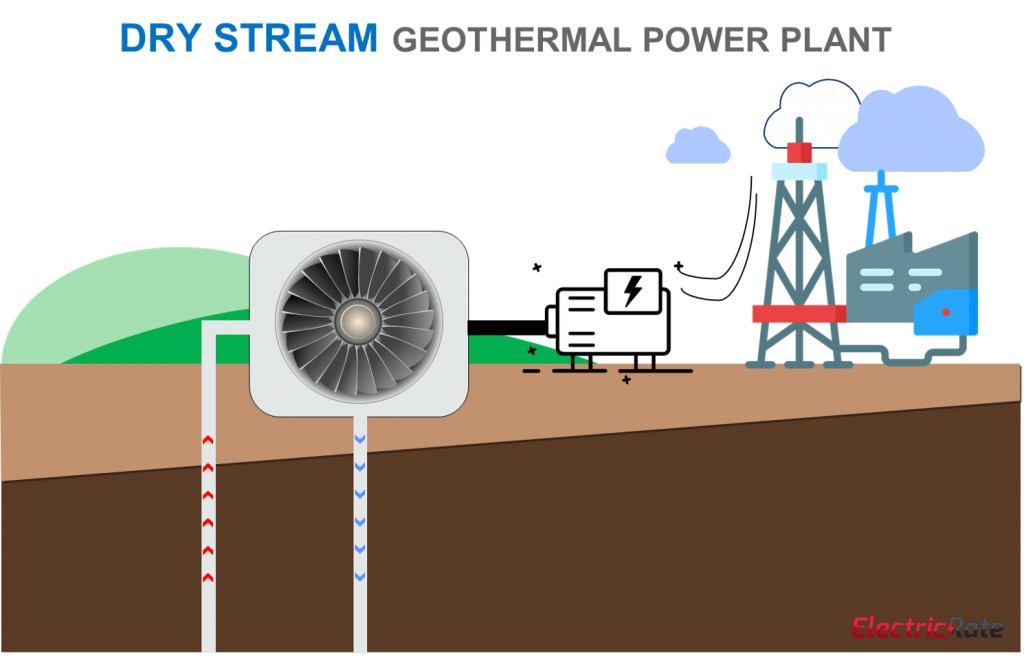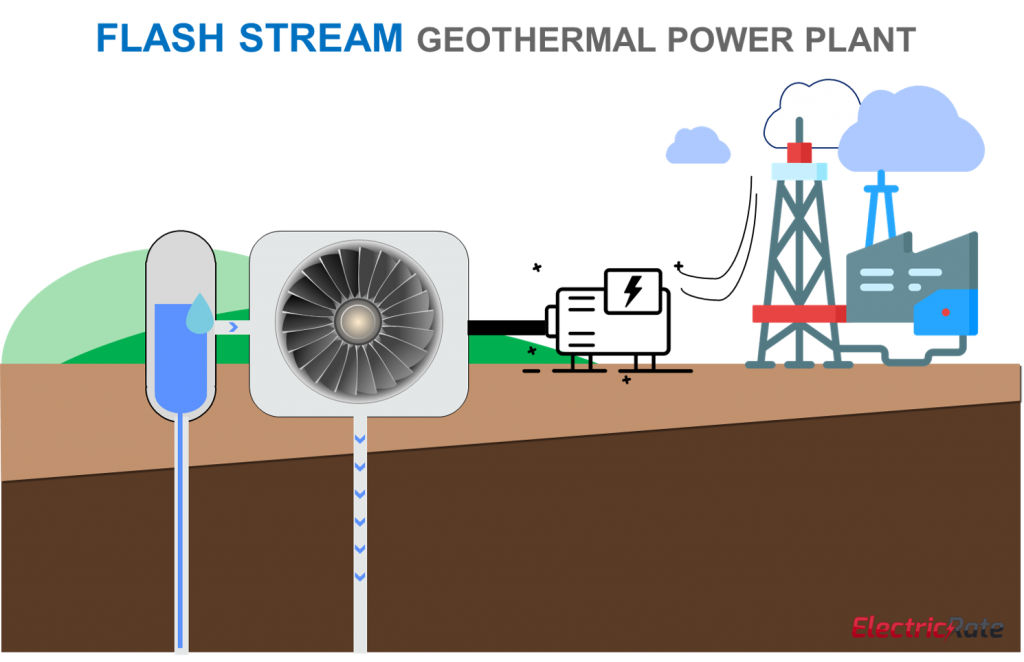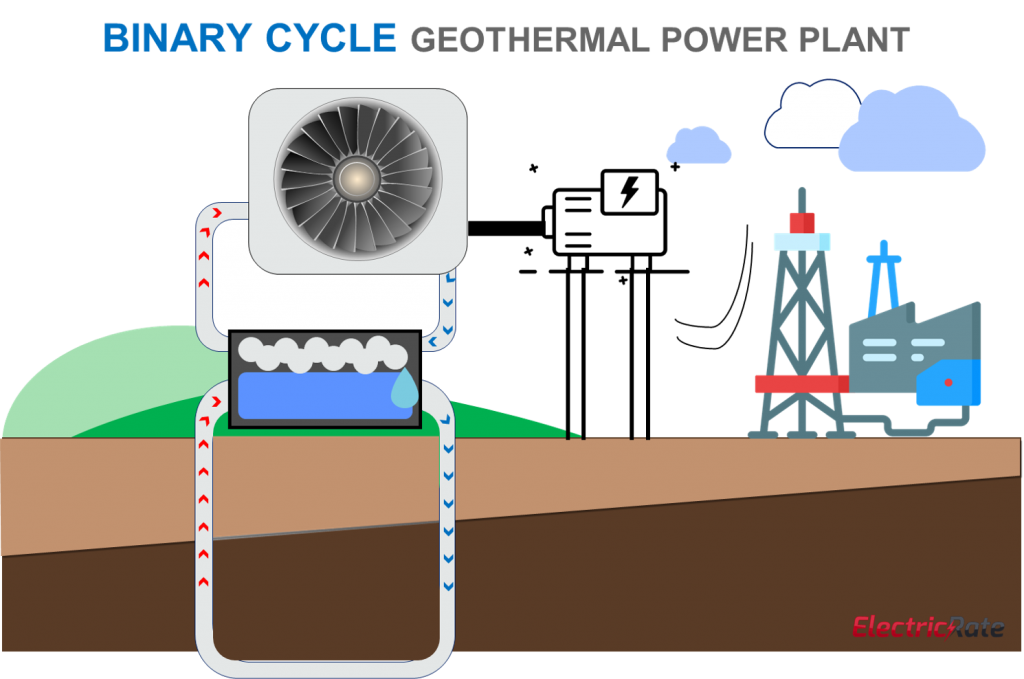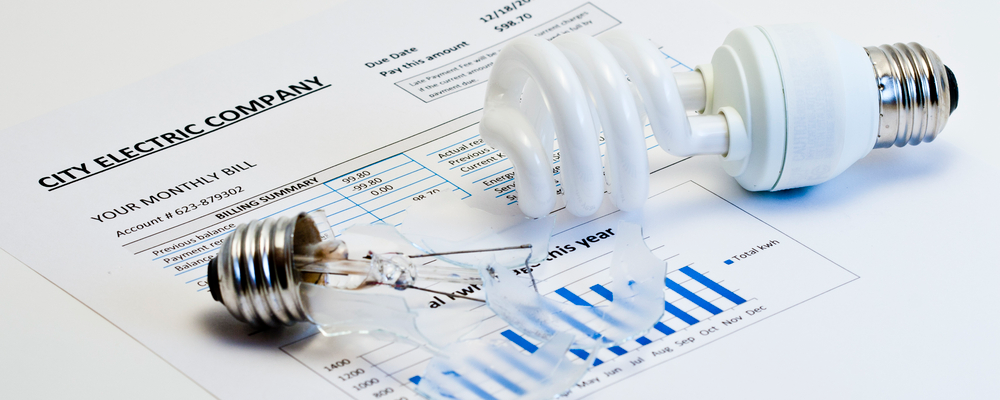How do you Produce Electricity using Geothermal Energy?
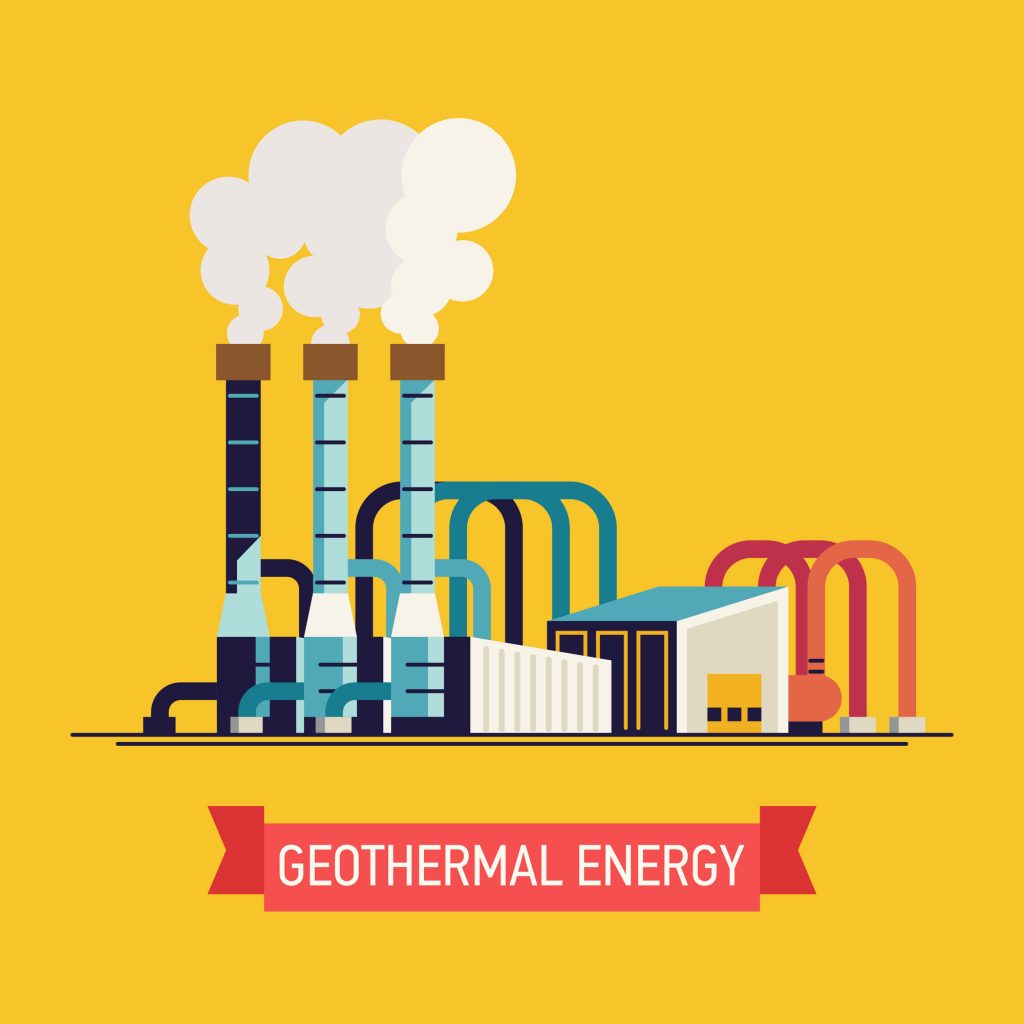
We are racing against time to find cleaner, more efficient energy sources to power our ever-increasing addiction to electricity. One potential source that we’ve barely tapped is geothermal energy – the hot air and water deep inside the Earth. Is it possible that the answer lies underneath our feet? Let’s dig in and learn how geothermal energy works.
How Is Geothermal Energy Formed?
Geothermal energy comes from the thermal energy generated and stored in the Earth. If you dig a hole straight through the Earth’s surface, you would notice that the deeper you go, the warmer it gets until you get to the inner core with a temperature of 5,200° Celsius (9,392° Fahrenheit).
The heat from the core is constantly radiating outward and warming rocks, water, gas, and other geological material. When rocks are heated at 1,300-2,400° Fahrenheit temperatures, they become a hot molten called magma. When magma heats the surrounding area, it releases hot water which you can observe as a geyser or hot springs.
These are the sources of geothermal energy. When you capture the hot air or water, you can turn it into electricity. Because the hot water or steam is then returned to the ground where it can be used again, geothermal energy is considered renewable.
Electricity Generation Of Geothermal Power Plants
The first geothermal power plant was built in Italy, in 1904 when natural steam erupted from the earth. Today, as many as 80 countries harness electricity from geothermal systems around the world.
If you have visited California’s Mayacamas Mountains, it might come as no surprise that the United States is the leader in geothermal production. The largest geothermal field, known as “The Geysers”, has a combined installed capacity of 1,517MW and is capable of powering 900,000 homes.
More than 350 steam production wells have been drilled in the Golden State to tap the natural steam. Some of these wells are as deep as three kilometers. Despite being its world’s largest producer, geothermal resources currently account for 0.4% of net electricity generation in the United States.
Another notable example of harnessing geothermal resources for electricity is Iceland. The country of 600 hot springs and 200 volcanoes produces 25% of its energy with geothermal technologies.
Different Types Of Geothermal Power Plant
There are three types of geothermal power plants: dry steam, flash steam, and binary cycle. They each function on the same principle – using steam from the hot water to rotate a turbine which activates a generator. Afterward, the steam is piped back underground through injection.
Dry Stream
The most common system, dry steam power plants draw from underground resources of steam. They pipe hot steam from underground reservoirs directly into a turbine/generator unit that generates power. Afterward, the steam is piped back into the Earth through injection.
Flash Stream
Rather than steam, flash plants pump hot water from the ground directly into a “flash tank” on the surface. Since the tank is cooler, the change of temperature causes water to flash into steam, powering the turbines. Any leftover water and condensed steam are fed back to Earth.
Binary Cycle
Binary cycle plants use the heat from hot water (at temperatures of about 225-360°F) to boil a working fluid with a low boiling point, usually an organic compound like isobutene. The steam produced in the process is fed into the heat exchanger and used to turn a turbine.
Enhanced Geothermal Systems
Enhanced Geothermal Systems or EGS are considered by many to be the future of using geothermal resources. Traditionally, geothermal plants need to be built in the proximity of reservoirs, leaving large quantities of underground hot water untapped (the U.S. Geological Survey puts it at half of the total U.S. capacity).
EGS are engineered geothermal reservoirs, created by drilling and pumping cold water deep below the Earth’s surface to gain access to hot water and steam. The water, called brine, is then piped back up to Earth’s surface through a “production well.”
Despite its undeniable merit of producing renewable energy without fossil fuels, it is hard to estimate the long-term impact of disrupting Earth’s underground structures by pumping water. In Switzerland, EGSs caused hundreds of tiny earthquakes that grew to more significant seismic activity, leading to geothermal projects being canceled in 2009.
The Pros And Cons Of Geothermal Power Plants
So what’s the verdict? Is geothermal energy the future of electric generation? Like with everything else in life, the answer is that it depends. Like with other sources, harnessing geothermal power has upside and downsides both for its users and the environment.
Advantages
 | Renewable energy used - Because of the closed-loop system, the steam extracted from the ground and used to power the generator is injected back to be used again. Basically, as long as the Earth continues radiating heat out from its core (which it will for billions of years), we can treat geothermal power as renewable and clean (no fossil fuels are burned either). |
 | It's Reliable - Other renewable sources, such as solar or wind are very intermittent by nature and the amount of power they can produce depends heavily on the season. Not geothermal systems. Geothermal power plants produce power or heat 24 hours a day, 7 days a week. |
 | It is Compact - Geothermal systems use a lot less space compared to other power plants. To produce the same amount of power, a geothermal plant typically uses about 404 square miles of land, 69 percent less than a wind power plant and 87 percent less than a solar photovoltaic farm. |
Disadvantages
However, despite its merits, harvesting geothermal energy still poses many challenges:
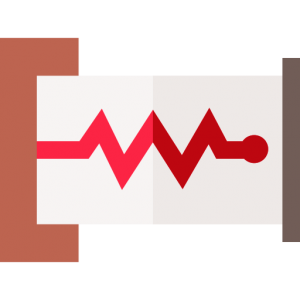 | Land sinking - Geothermal heat pumps have been linked to the slow sinking of land which happens when underground fractures collapse upon themselves. This leads to damage and disruption to natural systems, as well as roads, bridges, and buildings. |
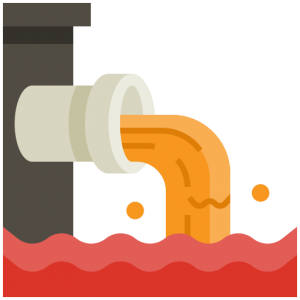 | Water Pollution - Water that flows through underground reservoirs can pick up trace amounts of toxic elements such as arsenic, mercury, and selenium. These harmful substances can be leaked to water sources if the geothermal system is not properly insulated. |
 | Initial Cost - Installing a geothermal system can have high initial costs that developing countries might not be able to afford. According to the DoE, the initial cost of the plant is typically around $2500 per installed kW in the United States while operating and maintenance costs range from $0.01 to $0.03 per kWh. |
FAQ
How Expensive Is Geothermal Energy?
The expense of building geothermal heating and cooling systems is heavily skewed toward early expenses, rather than ongoing costs. According to the Department of Energy (DoE), the initial cost of the plant is around $2500 per installed kW in the United States while operating and maintenance costs range from $0.01 to $0.03 per kWh.
Where Do You Find Geothermal Energy?
Geothermal energy is the heat that comes from underneath the Earth. Beneath the crust, buried deep with rocks, gas and other geological materials are pools of hot liquid that can be extracted and turned into steam, which in turn can power a turbine. Geothermal energy has experienced a relative boom and it’s now relied upon in more than 20 countries (despite the U.S. being the world’s largest producer).
How Effective Is Geothermal Energy?
Geothermal systems are extremely effective – For every unit of electric power the system uses, it provides three to four units of heat (efficiency of 300% to 400%). Some research estimates that compared to traditional systems, using a geothermal heat pump can save 30 to 70% in heating mode and 20 to 50% in the cooling for homeowners annually.
What Are Three Types Of Geothermal Systems?
There are three types of geothermal power plants: dry steam, flash steam, and binary. They each function on the same principle – using steam from the hot water to rotate a turbine which activates a generator, to generate electricity. Afterward, the steam is piped back underground through injection.
Final Words
Geothermal energy is a gift that keeps on giving, springing from and returning to Earth, and powering our world with clean energy in the meanwhile. Do we think that it has the potential to solve the climate crisis? Only time will tell. However, investing in a geothermal system to power your home with green power just might be worth looking into.
Updated on

